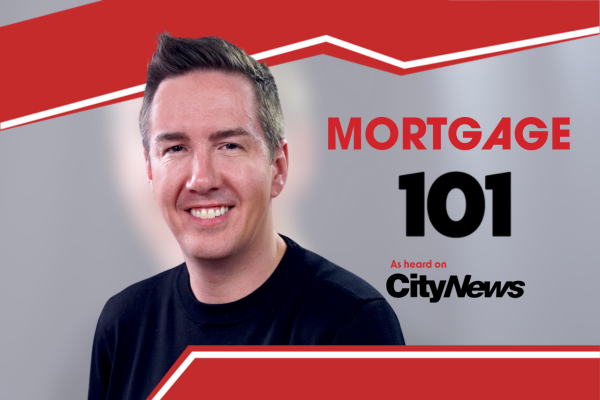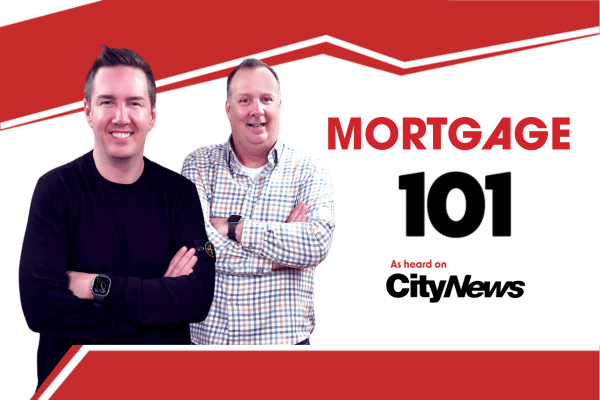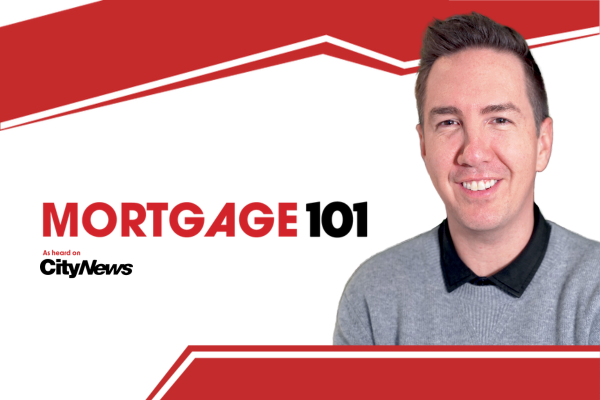What are the implications of the 30-year mortgage? Clinton and Todd sit down this episode and chat a bit more in-depth about what the 30-year mortgage means for first time homebuyers, noting the need for affordable housing options in the region, especially in urban centers like Halifax. Clinton emphasizes the importance of builders offering spec homes to cater to first-time buyers, advocating for standardized, cost-effective builds to reduce market competition and stress for buyers.
Mortgage 101 – options and programs for first-time home buyers | October 2021 Part 4
In this episode of Mortgage 101 with Clinton Wilkins and Todd Veinotte, as heard on CityNews 95.7, the guys talk about programs to help first-time buyers get into their first home! From how much money first-time home buyers need to save, to meeting the qualifications for incentives and a borrowed down payment program, you can find all the options and programs for first-time home buyers discussed here!
Mortgage 101 with Clinton Wilkins & Todd Veinotte: Options and programs for first-time home bueyrs | October 2021 Part 4
Don’t feel like watching the video? Check out the transcript below.
Transcript:
First-time buyers need $30,000 to $40,000 saved in today’s market
Todd Veinotte: [00:00:00:11] What do you want to talk about?
Clinton Wilkins: [00:00:01:14] You know, I think that we should do a deeper dive into how first-time home buyers can make the impossible possible.
Todd Veinotte: [00:00:09:12] Which is, the impossible is getting a house in this day and age.
Clinton Wilkins: [00:00:11:25] I think getting an accepted offer sometimes feels like the impossible.
Todd Veinotte: [00:00:15:13] How much money do you need to have? And I know that obviously depends on what you’re going to purchase. But in the bank going into it, what should you have kicking around?
Clinton Wilkins: [00:00:23:15] At a minimum, have the five per cent down payment? My rule of thumb is that mortgage borrowers should really have about eight per cent of the purchase price between the down payment closing costs and, you know, things come up adjustments and stuff like that.
You know, first-time home buyers in today’s market should have somewhere between $30,000 to $40,000 available. And obviously, you know, there needs to be some decent household income. I would say, you know it, it kind of depends from borrower to borrower. You know how much they actually do need to qualify. Some of that has to do with their indebtedness. But typically, the average first-time home buyer these days has to have household income of somewhere around about $100,000.
Todd Veinotte: [00:01:12:00] Wow.
Clinton Wilkins: [00:01:13:12] It’s significant.
Todd Veinotte: [00:01:14:09] And some of this can be gifted?
Flex Down: A borrowed down payment program
Clinton Wilkins: [00:01:15:29] Yeah, of course it can be gifted. It can be saved. You know, some borrowers have access to programs through the insurers called Flex Down, which is a borrowed down payment. So there are certainly options.
But the easiest is obviously having, you know, the savings in place and that maybe that’s an RRSP, maybe that’s a TFSA. One thing that really does enable a lot of borrowers to make it a little bit easier is the first-time home buyers incentive.
It’s not available for all first-time home buyers. There’s a maximum constraint of household income of $120,000, and you can’t exceed in our market more than four times the annual income between the mortgage amount and the incentive.
But it’s a conversation that we have with all first-time home buyers because I think that for a lot of people, it will reduce their borrowing costs, but also their high ratio insurance costs. So that’s a great way to get in in the door.
Todd Veinotte: [00:02:19:11] Is that who sponsors it? The insurance company?
Clinton Wilkins: [00:02:23:03] Yeah, the Canadian Mortgage Housing Corporation is the one that does that.
Todd Veinotte: [00:02:26:11] How does it work?
Clinton Wilkins: [00:02:28:07] It’s a shared equity program, and the borrowers have to put down the first five per cent from their own resources. The down payment cannot exceed 19.99 per cent total. So in theory, a borrower could put down up to 14.99 per cent and then the insurer will come with another five per cent.
New construction homes can get 10 per cent with Flex Down
With a new home, it is a brand new property, they will actually come in behind with as much as 10 per cent in shared equity.
Todd Veinotte: [00:02:57:10] Why?
Clinton Wilkins: [00:02:57:10] I think there is more of an incentive for obviously new construction properties. Sometimes new construction is actually more expensive than resale homes. And I think it’s probably the less risk for the insurer and really the government at the end of the day. Typically, new homes do appreciate sometimes faster than resale.
Todd Veinotte: [00:03:13:14] So let me get this straight. A new home buyer has five per cent down they want to put and you’re telling me that CMHC will give them another five?
Clinton Wilkins: [00:03:23:23] Correct, if it’s a resale home. If it’s a new construction property, they’ll give them another 10 per cent.
Todd Veinotte: [00:03:28:23] And how do you qualify for that? Is there some type of income barrier or?
What are the qualifications for first-time home buyers incentives?
Clinton Wilkins: [00:03:33:14] Maximum $120,000 household income. Maximum. And the mortgage amount and the incentive amount cannot equal more than four times the annual household income.
Todd Veinotte: [00:03:46:16] Okay, so this sounds amazing. Why aren’t more people, I mean,
Clinton Wilkins: [00:03:50:06] People don’t talk about it. I would go out on a limb, Todd, and say, I’m probably one of the only mortgage brokers, and I’m also going to include lenders, people at the branch level that talk about the program here in our market. I think the program hasn’t hit across the country and I’ll use hit with air quotes.
I think part of the reason we haven’t seen the uptick is people don’t really know about it. I think that it’s slightly unpopular due to, you know, some areas of the country not even having insured mortgages, like there’s not much high ratio insurance happening in Toronto or Vancouver because you can’t get high ratio insurance currently with properties with a purchase price above $999,000.
So that’s too much of a liability, and they’re trying to cool the market with properties that are kind of over that price point. The other thing, you know, sometimes people don’t want to be in bed with the government. I think we all kind of are,
Todd Veinotte: [00:04:51:13] If they want to give you your money, their money, which is our money.
Clinton Wilkins: [00:04:53:24] And it’s interest free. The way that it works is you have 25 years to pay this, basically shared equity, back.
Todd Veinotte: [00:05:01:20] Oh have to pay it back.
Clinton Wilkins: [00:05:02:15] You have to pay it back. So you have 25 years to pay it back. Or if you ever sell the property or if the property ever becomes a rental, it gets paid and you pay back five per cent or whatever the property value is or the sale price is at that time that you sell it.
Is the first-time home buyers incentive right for me?
Todd Veinotte: [00:05:16:23] No interest though.
Clinton Wilkins: [00:05:17:09] No interest. So, you know, depending on what happens with the market, chances are the government’s going to make a couple of bucks. But kind of the rule of thumb that I have with most home buyers and first-time home buyers, the property needs to go up in value more than $100,000.
Todd Veinotte: [00:05:32:12] So they get five per cent of the future value. I see. Well, that’s good for them.
Clinton Wilkins: [00:05:38:08] It’s good for the home owner, in the sense that their interest carrying costs are going to take a smaller mortgage. So that’s certainly positive. The other real win is when we insure mortgages with the Canadian Mortgage and Housing Corporation, Sagen or Canada Guarantee, you pay your premium based on the percentage of the mortgage.
So normally, if you put down five per cent, you are financing 95 per cent. But if you take advantage of this program and it’s a resale property, we’re only financing 90 per cent of the purchase price. So it’s actually going to reduce that insurance premium. It actually reduces the percentage of the insurance as well. So it actually is a pretty good deal for first-time home buyers and we certainly have the conversation with everyone.
But I think that’s one of the big things that differentiates us, maybe from other lenders. And, you know, I’m not saying that we are the be all and end all in mortgage lending. There’s lots of options out there. You know, there is a bank branch on every corner in Halifax and really on every corner of even rural Nova Scotia. Branches everywhere. We have two offices.
But the reason that I think that we have a deep entrenched relationship with our clients, Todd, is because we give them the advice and talk about programs like this.
“Our bias lands with the client.”
Clinton Wilkins: [00:06:59:13] It’s not just taking the order. We really believe that we’re advocates for our clients and we really think that we’re unbiased to the lender. Our bias really, you know, lands with the consumer because I think that we’re in the relationship business. Yeah, absolutely. And if a borrower feels like they got good advice and good feedback from us, you know, that makes me feel good.
And I think that it’s also going to make sure that they’re going to come back to us and they’re also going to refer people like their friends and their family. And for me, we love making dreams come true. And obviously, homeownership is a big part of this Canadian Dream quote-unquote.
And there’s so many nuances, and I think for first-time home buyers, it is more challenging now than it probably ever has been. And I think it’s going to continue being challenging. But if I think if you can get some advice, you know, the first-time home buyers incentive is one small piece of it.
But I think if you can get advice like this and really get a good, solid plan together, it will pay off.
See you next month!
Todd Veinotte: [00:07:58:12] Mm hmm. What’s the best way for people to get a hold of you?
Clinton Wilkins: [00:08:01:04] You know, I think the first way is for them to check us out online at TeamClinton.ca/radio. Lots of great information online. We have over 500 blog posts on our website, which I’m very proud of. All done locally here in Nova Scotia. And if you surf on to our website, every blog post from the last several months have all been local photos across Nova Scotia.
So we’re proud that not only the content is from Nova Scotia, we’re also using photos that are done here locally. You know, we want to support people and I think just like owning a home, it takes supporting people. And I think when a consumer supports an unbiased, more professional in their area, they’re supporting a small business.
Todd Veinotte: [00:08:46:11] Clinton, always a pleasure. Thanks so much. Appreciate you doing this. It’s always great.
Clinton Wilkins: [00:08:49:27] Thanks for having me, Todd.
Todd Veinotte: [00:08:50:23] You got it. That’s Clinton Wilkins and myself Todd Veinotte. It’s Mortgage 101: Your Guide to Homeownership. We’ll be back next month.
If you have any questions, get in touch with us at Clinton Wilkins Mortgage Team! You can call us at (902) 482-2770 or contact us here.


